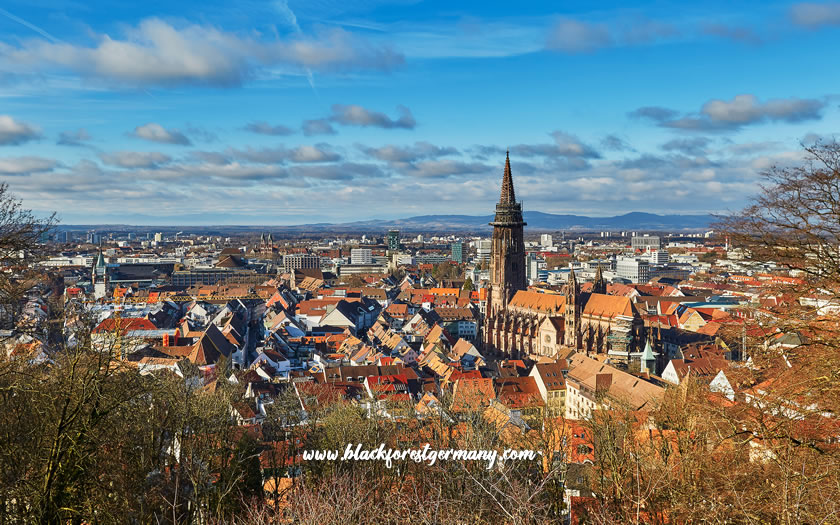

Freiburg, Germany
Freiburg im Breisgau is an eminently livable city in southern Germany with easy access to neighbouring countries and to the outdoor activities and sights of the nearby Black Forest.
It is frequently called Germany's 'sustainable city' and, taking advantage of the sunny location near the Rhine river in Baden-Württemberg, it is renowned for its ecological initiatives, vineyards and university life.
But it has plenty to attract the tourist as well, with the alleys and historic houses of medieval Freiburg clustered around the base of the Minster (commonly referred to by visitors as 'Freiburg cathedral').
Where is Freiburg im Breisgau?
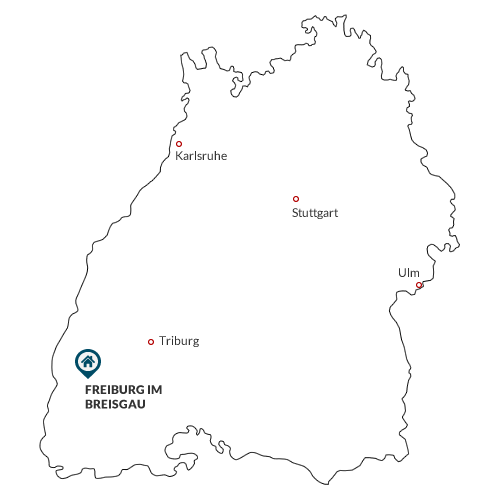
Freiburg is on the western edge of the Black Forest and situated close to the Rhine river in the state of Baden-Württemberg in southwest Germany.
Getting to Freiburg
Freiburg actually has its own airport, although EuroAirport Basel Mulhouse Freiburg is nearly 50 kilometres away and over the border in France. (The closest major international airport would be Zurich in Switzerland.)
The city lies on a major rail link which runs north-south between Basel and Karlsruhe. The train station also connects into the Black Forest towards Titisee and Donaueschingen.
Drivers will find the easiest connections via the nearby A5 motorway up and down the Rhine valley while the route to the east across the Black Forest is on a B road.
What to do in Freiburg
Freiburg celebrated its 900th anniversary as a city in 2020 and the pedestrian zone in the old town is full of fascinating buildings with ties to the important moments in the history of the settlement.
But Freiburg is not just a city concerned with its past. It has an international reputation as the 'green city' of Germany and a trip out to the Vauban district will reveal the 'Solar Settlement', a community developed on solar power which is designed to create more energy than it uses.
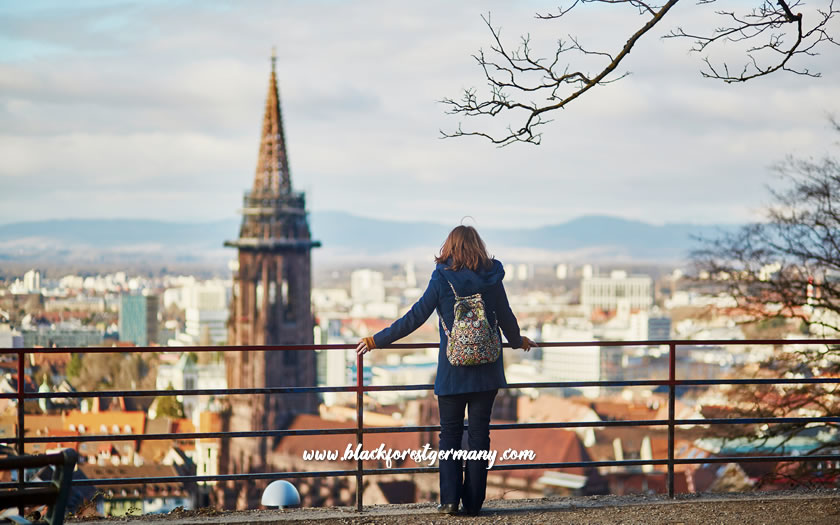
View over the town centre of Freiburg
Freiburg is also closely connected to the Black Forest and has its own favourite mountain recreation area almost on its doorstep, with the Schauinsland cable car and observation tower offering stunning views over the surrounding countryside.
The history of Freiburg
The history of the city of Freiburg goes back to the early Middle Ages and one of the noble German families, the Dukes of Zähringen. Previously there had been a castle on the hill behind the historic city centre (the Schlossberg) but the settlement at the foot of the hill was granted full town rights in 1120 by one of the last of the line.
Freiburg (literally 'free fortified town') became a prosperous settlement from the charter which granted rights to a market and from the silver mines in the nearby Black Forest.
The last of the Zähringer rulers started the construction of Freiburg Minster, the colossal religious building at the heart of the city. After his death in the early 13th century, the town was ruled by the Counts of Freiburg, who were so disliked by the city merchants that they purchased their independence and immediately signed up with the growing Hapsburg empire.
As the substantial income from mining on the Schauinsland dwindled, Freiburg slowly came to rely on its reputation as a centre of culture and learning. Freiburg university had been founded in 1457 and the rich merchants had encouraged arts and architecture.
The city switched hands many time during the religious and political upheavals which convulsed the continent of Europe from the 1700s for the next two centuries. As a 'front-line' city on the border between France and Germany, Freiburg was a frequent target of sieges and, at one point, the population declined to a couple of thousand inhabitants.
The Napoleonic era saw Freiburg incorporated into the new Duchy of Baden, and the city slowly prospered in the following decades with improvements in infrastructure and increasing industrialisation.
Freiburg was bombed by both German and American planes in the Second World War but, although there was substantial damage and loss of life in the city, the historic minster remained standing.
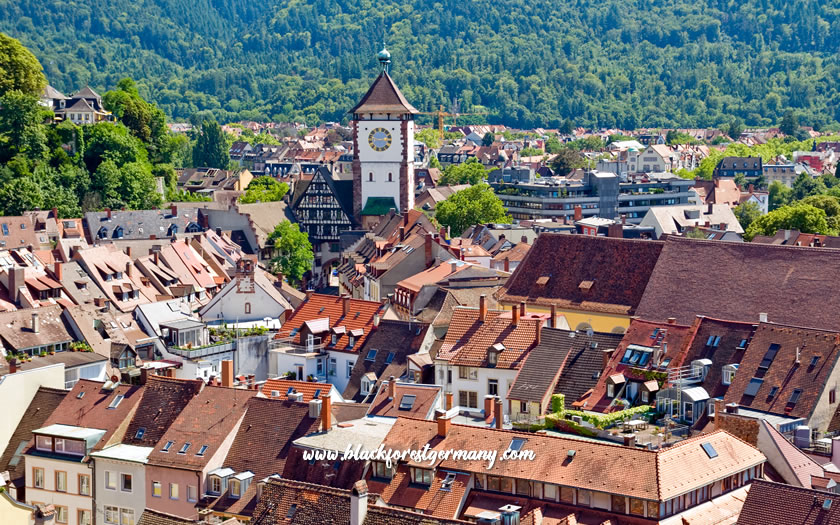
The medieval town of Freiburg im Breisgau
These days Freiburg is a prosperous city of around 200,000 inhabitants. Around 30,000 of the local population are students and the city university is one of the oldest in Germany.
The city has a reputation for involvement in environmental and social issues and visitors can experience this for themselves with the extensive public transport system or a trip out to the sustainable quarter of Vauban.
The old city of Freiburg
One of the big pleasures of Freiburg city's old town is wandering around the compact pedestrian zone. Those arriving by train into Freiburg Hauptbahnhof just have a short walk across the railway bridge into the city centre.
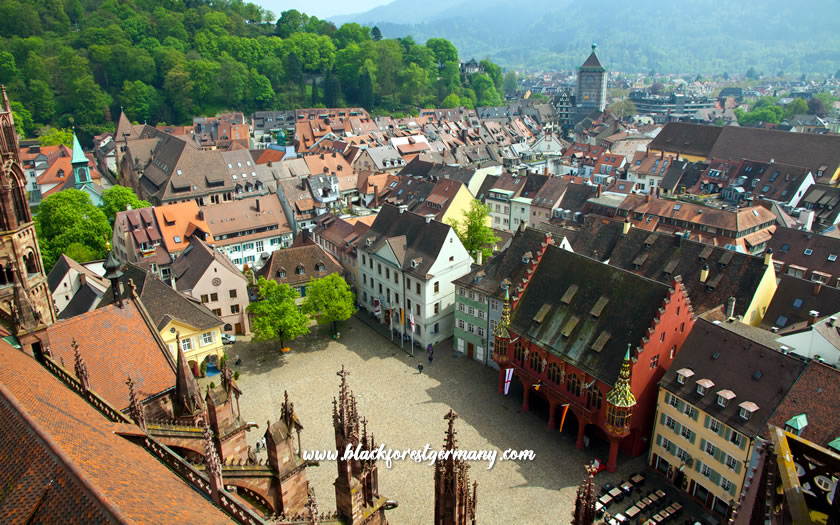
The old town centre of Freiburg
One of the most popular destinations in the old town is Freiburg Münster, the cathedral with the massive but elegant spire at the heart of the medieval city centre.
The Münster, or Minster in English, took centuries to build, starting out in the Romanesque architectural style and finishing up in as a classic example of ecclesiastical Gothic.
Visitors can climb part of the 116-metre high spire for fabulous views out over the city.
It is surrounded by a square which is used as a market on certain days and by one historic building after another. Many of them have been restored after the severe bombing damage from World War II.
Most walking tours, either independent or guided, will start from the Tourist Information office, which is located in Rathausplatz and is reached on the way to the Minster.
Somewhat confusingly, there is an Old Town Hall ('Altes Rathaus') and a New Town Hall ('Neues Rathaus'), with the new one (white) being in a slightly older building than the old one (red). Both house local government offices, with the Tourist Information office located on the ground floor of the Old City Hall.
Moving away from the Minster towards the Schwabentor, a clock tower in the former defensive wall around the city, the Schneckenvorstadt is another popular destination in the old town.
Here is where the dyers and tanners worked in the Middle Ages, kept away from the more prosperous parts of the city because of the smell. The waters of the Dreisam River were diverted into channels for their use, forming the Freiburg 'Bächle' ('little streams') that are a feature of this quarter and which give rise to the nickname 'Little Venice'.
A short walk uphill from the Schwabentour is the Schlossberg, the site of the original fortifications which led to the foundation of the city. The hill offers great views over the old town and is a perfect spot to relax with a local beer under the trees.
Schauinsland mountain
The Schauinsland cable car rises to almost 1300 metres from a valley station that can be reached by tram or bus from the city centre of Freiburg.
The mountain (the name literally means 'take in the countryside') offers stunning views back down into the city and across the Rhine valley, as well as panoramas of the other Black Forest mountains and valleys.
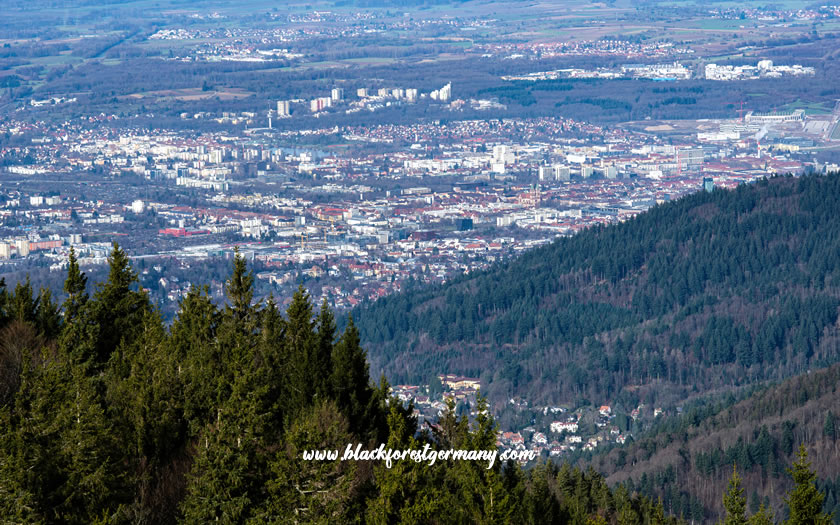
View of Freiburg from Schauinsland
The cable car was opened in 1930. It was renovated in 2013 and is the longest in Germany, covering a distance of 3600 metres.
It is now a favourite day trip with locals and their families who fancy a short hike to a mountain restaurant or a trip up the observation tower. Visits can also be made to a farmhouse museum and a mining museum.
Vauban and the Solar Settlement
Vauban is a district south of Freiburg's inner city. It was once the site of an army barracks and, in the 1970s, became a centre for squatters and housing campaigns.
Redevelopment of the area took place at the beginning of the 21st century and building projects that had an environmental concept were favoured.
One of the most well-known developments is the 'Sun Ship' - a combination of retail and housing structure that relies on solar energy. It is part of the 'Solar Settlement', which aims to produce substantially more energy than it consumes.
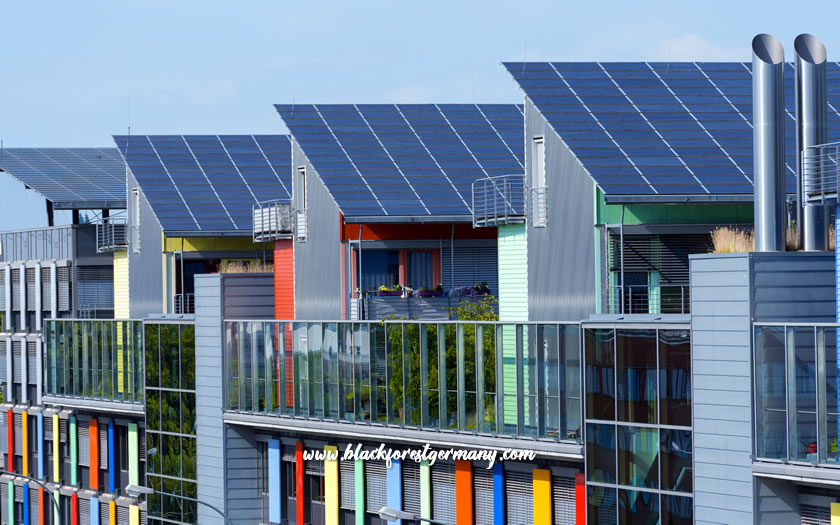
The Sun Ship in the Solar Settlement in the Vauban district of Freiburg
The redevelopment of the Vauban district was also deliberately favourable to family housing, and the area now has one of the highest proportions of children in a German city.
Where to Stay in Freiburg
Those looking for a Freiburg hotel room can try one of the options below. Those who prefer self catering apartments or bed-and-breakfast accommodation may prefer to check the apartment and room availability on the map below the hotel listings.
Top-rated hotels in Freiburg
Try one of these highly-rated hotels near the centre of Freiburg:
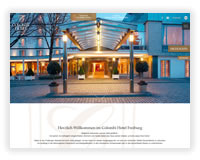
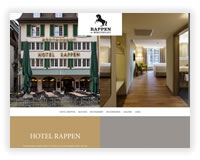
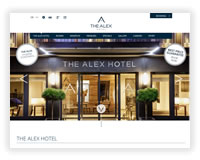
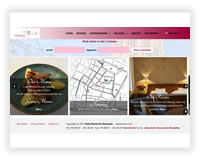
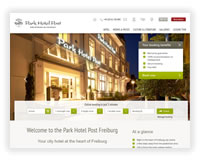
Check accommodation availability in Freiburg
Check the availability of all kinds of accommodation in Freiburg im Breisgau, from apartments to guesthouses and hotels, with this city map. Zoom in and out using the '+' and '-' signs and use the search box to choose appropriate dates. Click on the price to see more details about the accommodation.
